We developed a single sideband SIS receiver for 0.85 mm wavelength and tested it on the 30m Telescope. The single sideband receiver noise of 48 K is only three times above the quantum limit of heterodyne receiver sensitivity. Spectral line observations are speeded up by a factor of two to three with the new receiver.
The receiver noise ![]() may be expressed as a number N of incident
photons per second and unit bandwidth, doubling the output signal of
the receiver [1]. N may be used to compare different low noise
receivers operating in different bands. The same value is obtained by
comparing the receiver noise with the quantum limit:
may be expressed as a number N of incident
photons per second and unit bandwidth, doubling the output signal of
the receiver [1]. N may be used to compare different low noise
receivers operating in different bands. The same value is obtained by
comparing the receiver noise with the quantum limit:
![]() . In our previous work we reported on a
four photon noise double sideband SIS receiver with a broad band
fixed-tuned SIS mixer [2] used at the 30m telescope in 1993-1995. The current
. In our previous work we reported on a
four photon noise double sideband SIS receiver with a broad band
fixed-tuned SIS mixer [2] used at the 30m telescope in 1993-1995. The current ![]() is about a factor of three above the quantum limit.
is about a factor of three above the quantum limit.
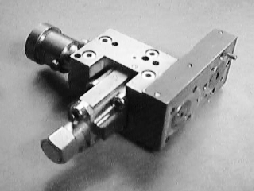
Figure 1: SIS receiver module with the mixer block, the waveguide
coupler for local oscillator power injection and the mixer backshort
drive.
In the new receiver the upper sideband is rejected by the tuning of a
single backshort in the SIS mixer. Compared to a quasi optical image
band filter this technique allows one to reject the image band noise
with a minimum increase in receiver noise. In order to simplify the
sideband rejection we increased the IF band central frequency from 1.5
GHz to 4 GHz. The new 4 GHz IF amplifier has been developed by D. Gallego at the Centro
Astronomico de Yebes (Spain). It has a 1 GHz bandwidth and 7 K noise
temperature. In the SIS mixer we are using a two junction array with
individual inductive tuning. The individual junction area is about
![]() m
m ![]() and the critical current density is about 7 kA/cm
and the critical current density is about 7 kA/cm ![]() . A
general view of the SIS
receiver is presented in Fig. 4.
. A
general view of the SIS
receiver is presented in Fig. 4.
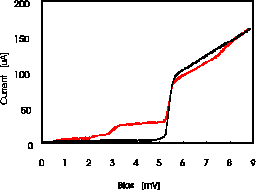
Figure 2: SIS junction Current - Voltage characteristics with and
without LO power at 340 GHz.
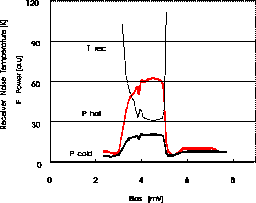
Figure 3: DSB receiver operation in the laboratory.
The new receiver single sideband noise temperature is 48 K at 330 GHz while the double sideband noise is about 30 K around 320 - 340 GHz (Figs. 2, 3).
The receiver was used at the 30m telescope on March 4-11, 1997. With
the new receiver the minimum radio telescope system noise in the
reference plane out of atmosphere is about 400 K
(Fig. 6). The receiver sideband rejection at 330 GHz was
measured using the ![]() CO(3-2) spectral line of
Orion-IRC2 as a reference source (Fig. 6). The gain in observing
time with the new receiver is a factor two or three,
depending on the atmosphere.
CO(3-2) spectral line of
Orion-IRC2 as a reference source (Fig. 6). The gain in observing
time with the new receiver is a factor two or three,
depending on the atmosphere.
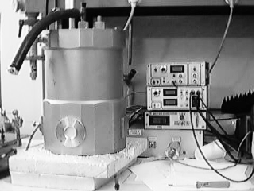
Figure 4: SIS receiver: general view
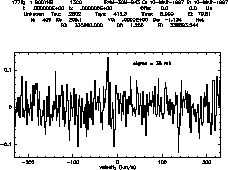
Figure 5: SSB receiver operation at the telescope. The
system noise is 415 K ( ![]() scale). The peak-to-peak noise
is 35 mK after 5 min of integration (spectrum kindly communicated by F. Combes)
scale). The peak-to-peak noise
is 35 mK after 5 min of integration (spectrum kindly communicated by F. Combes)
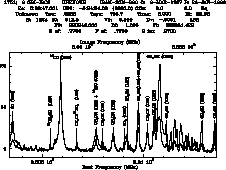
Figure: The receiver sideband
rejection at 330 GHz, measured using the
![]() CO(3-2) line in Orion-IRC2 as a reference. Two spectra were measured
with and without upper sideband rejection. The spectral lines coming
from the upper sideband, as CH
CO(3-2) line in Orion-IRC2 as a reference. Two spectra were measured
with and without upper sideband rejection. The spectral lines coming
from the upper sideband, as CH ![]() OH at 338.4 GHz, are attenuated by about
7 dB (spectrum spectrum kindly communicated by F. Combes).
OH at 338.4 GHz, are attenuated by about
7 dB (spectrum spectrum kindly communicated by F. Combes).
[1]. M. J. Wengler, "Submillimeter-wave detection with superconducting tunnel diodes", Proc. IEEE, vol. 80, pp. 1810 - 1819, 1992.
[2]. A. Karpov, J. Blondel, M. Voss, K. H. Gundlach, "Four photons sensitivity heterodyne detection of submillimeter radiation with superconducting tunnel junctions", IEEE Transactions on Applied Superconductivity, Vol. 5, No. 2, pp. 3304-3307, 1995.
A. KARPOV